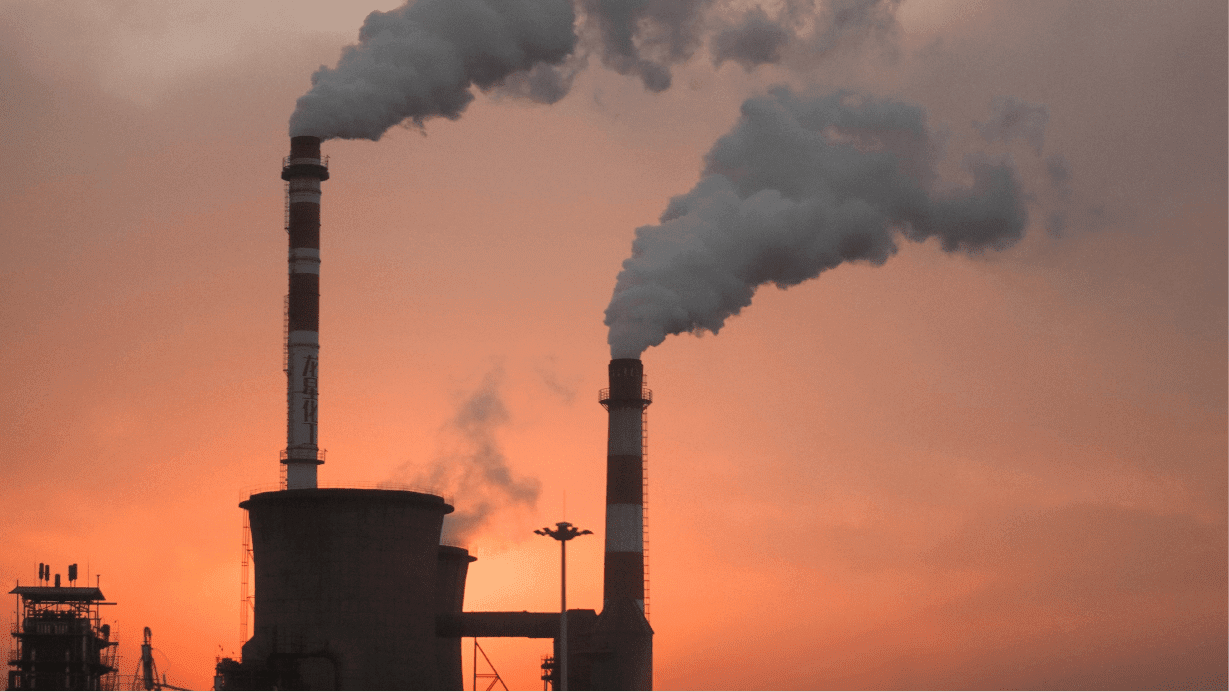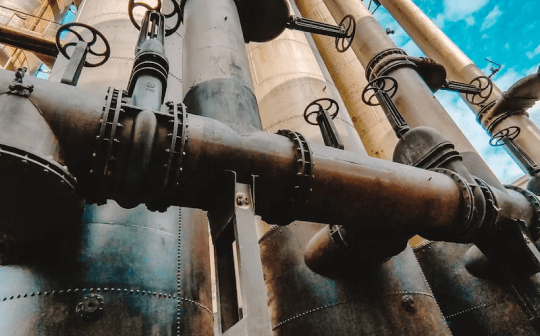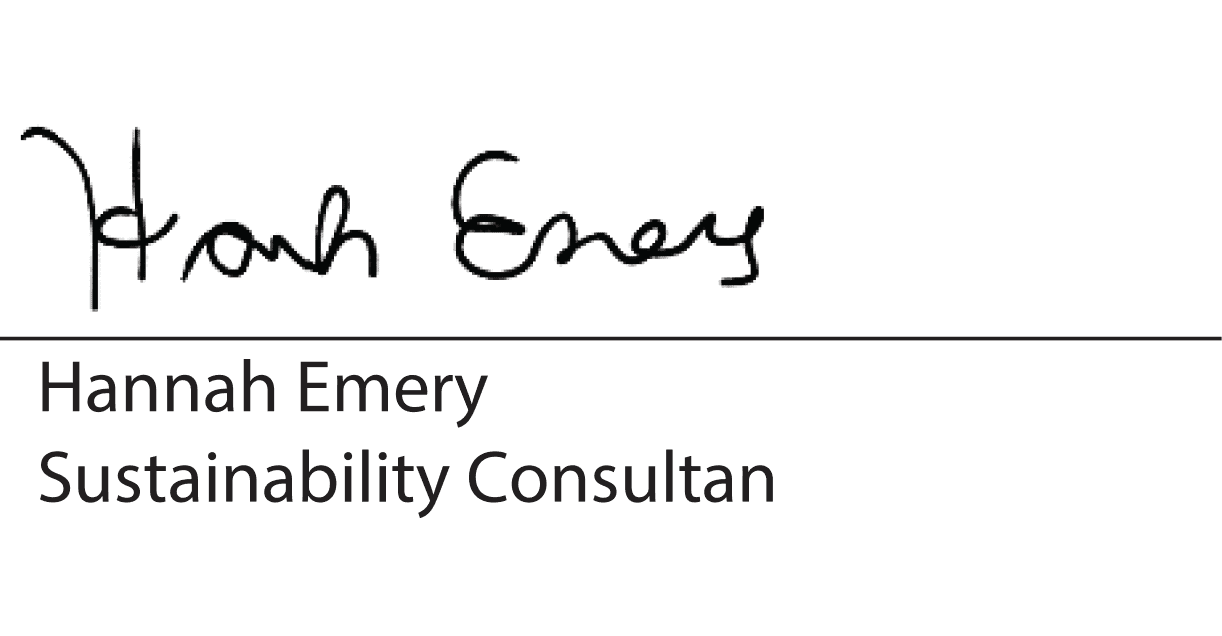2024Yearly Report
ANNUAL IMPACT REPORT
Download PDF
Glossary
Blended Capital
A mix of funding sources including public, private, or non-profit grants, equity, and debt.
Capital Expenditure/Expense (CAPEX)
The money an organization or corporate entity invests to buy or improve its fixed assets, such as buildings, vehicles, machinery, or land.
Impact Programs
Aii programs track actual emissions savings at the factory level, focusing on what is truly achieved rather than savings potential. These programs are applied in the implementation phase of the Supplier Journey Map.
Operational Expenditures (OPEX)
An ongoing cost of running a product, business, or system, such as rent, salaries, or repairs.

Savings - Impact Programs
A supplier’s savings type depends on program status. Aii therefore divides savings into four categories:
- 1. Potential savings are based on the full list of potential actions identified when the supplier starts an Aii program. This is the highest possible value; the other data points represent a subset of these actions.
- 2. Forecasted savings are based on a roadmap of interventions Aii expects the supplier to begin implementing over a multi-year period.
- 3. Projected savings are based on the subset of actions the supplier has agreed to and is actively implementing.
- 4. Actual savings are based on actions that have been implemented and achieved results. This is measured upon completion of the Aii program.
Savings - CSP Solutions
- Forecasted savings are based on the interventions the grantee intends to deliver over the course of the project.
- Actual savings are based on actions that have been implemented and achieved. Results are measured at the end of the solution’s implementation.
Supplier
Aii defines “supplier” as all stakeholders along the value chain that produce or convert products, including farms, manufacturers, and mills.
Tiers
We classify our facilities in line with the Supply Chain Taxonomy, published in November 2024, which was created in collaboration with apparel alliance members.
If a facility is vertical, we classify it under Tier 2.
If a facility is vertical, we classify it under Tier 2.
Tier 4
RAW MATERIAL PRODUCTION & PRIMARY PROCESSING
188 Mt Co2e
0%
The extraction and farming of primary raw materials from the earth (e.g. fossil fiels), plants, (e.g. cotton), or animals (e.g. wool), and the collection of secondary raw materials into a commodity state.
Tier 3
INTERMEDIATE MATERIAL PROCESSING
134 Mt Co2e
0%
Processing of raw materials into yarn and equivalent state.
Tier 2
MATERIAL MANUFACTURING
482 Mt Co2e
0%
Production and finishing of materials (e.g. fabrics, trims) that go directly into the finished product.
Tier 1
FINISHED PRODUCT MANUFACTURING
75 Mt Co2e
0%
Assembly and manufacturing of final products.
Acronyms & Abbreviations
- Aii: Apparel Impact Institute
- BPAP: Best Practices Action Plan
- CAPEX: Capital Expenditure
- CbD: Clean by Design
- CbD+: Clean by Design +
- CO2e: Carbon dioxide equivalent
- CSP: Climate Solutions Portfolio
- CTA: Carbon Target Assessment
- CTS: Carbon Target Setting
- GHG: Greenhouse Gas
- GJ: Gigajoule
- Gt: Gigatonnes
- FCF: Fashion Climate Fund
- Mt: Megatonnes = 1 million tonnes
- OPEX: Operational expenditures
- RETI: Renewable Energy Transition Initiative
- SCAP: Supplier Climate Action Programme
- VCI: Value Change Initiative

Methodology / Calculations
Actual cost per tCO2e
We calculate the actual cost per tCO2e as follows:
- Aii programs: Total Capital Unlocked / Overall Impact Achieved over useful life
- CSP grant-funded solutions: Total funding / (Total actual GHG reductions in 2024 over useful life)
Average Percentage Reduction
The percentage reduction is calculated by dividing the reductionvalue by the baseline value for each metric. Therefore, the average percentage reduction is the average of the percentage reduction value from all the suppliers.
However, in some cases, it is not possible to calculate this value for a specific supplier, (e.g., if no baseline is available due to being out of the project scope or because the first assessment was not possible).
In other cases, some programs only generate certain types of savings but not others (e.g. there are no GHG savings in CbD chemicals).In those cases, the supplier is excluded from the average calculation. Therefore, if out of 50 suppliers, two lack baseline values and two did not generate GHG savings through impact programs, the average GHG % reduction will be calculated based on the remaining 46 suppliers.
However, in some cases, it is not possible to calculate this value for a specific supplier, (e.g., if no baseline is available due to being out of the project scope or because the first assessment was not possible).
In other cases, some programs only generate certain types of savings but not others (e.g. there are no GHG savings in CbD chemicals).In those cases, the supplier is excluded from the average calculation. Therefore, if out of 50 suppliers, two lack baseline values and two did not generate GHG savings through impact programs, the average GHG % reduction will be calculated based on the remaining 46 suppliers.
Carbon Emission Unit
Aii’s carbon emissions data is measured in tonnes/metric tons (1000 kg).
Conversion Factors
Conversion factors are used to convert the original energy source units to a common unit. For programs that achieve reductions across multiple sources (e.g., natural gas, electricity, biomass), we apply conversion factors to standardize measurements into a single unit (megajoule or gigajoule), allowing for a total reduction calculation The same principle applies to the baseline.
Aii is currently adopting the Conversion Factors provided by Higg FEM.
Aii is currently adopting the Conversion Factors provided by Higg FEM.
Effectiveness Percentage Reduction Potential kgCO2e / kg Production of Model Process
We have aligned the solution evaluation and communication methodology for CSP solutions. All applicants calculate their effectiveness according to the CO2e/kg production baselines outlined in the Ready Reckoner. This makes it easier to compare effectiveness across solutions.
Emission Factors
Emission factors represent the greenhouse gas emissions associated with a specific activity or process. In our programs, it is emissions associated with energy consumed or reduced from a particular energy source.
Aii currently uses a mix of emission factors, including Higg FEM, country-level grid electricity emission factors, and country-level adjustments for certain energy sources.
We source electricity emission factors from a combination of governmental and non-governmental entities. This mix depends on the reporting timelines of each country’s government and the credibility of non-governmental sources. Since a country’s energy grid composition can change every year, we update our emission factors accordingly. For example, if a facility completed a program in 2022 and we have the emission factor for 2022, we will use that factor for our calculations. If we do not have the 2022 emission factor, we apply the most recent factor available before the program completion year.
Emissions factors for other energy sources depend on the country’s biofuel policies, thus aligning with local emission regulations (e.g., China). This stems from the absence of both grid emission factors provided by Higg FEM and industry consensus around biofuels. Our technical team recognizes steam used within China should have a different emission factor due to the characteristics of its primary energy source.
These emission factors, unlike grid emission factors, come from aggregated industry studies and are applicable to all countries. Since the most recent studies reflect the most accurate methodology, we update all historic emissions factors accordingly.
Aii currently uses a mix of emission factors, including Higg FEM, country-level grid electricity emission factors, and country-level adjustments for certain energy sources.
We source electricity emission factors from a combination of governmental and non-governmental entities. This mix depends on the reporting timelines of each country’s government and the credibility of non-governmental sources. Since a country’s energy grid composition can change every year, we update our emission factors accordingly. For example, if a facility completed a program in 2022 and we have the emission factor for 2022, we will use that factor for our calculations. If we do not have the 2022 emission factor, we apply the most recent factor available before the program completion year.
Emissions factors for other energy sources depend on the country’s biofuel policies, thus aligning with local emission regulations (e.g., China). This stems from the absence of both grid emission factors provided by Higg FEM and industry consensus around biofuels. Our technical team recognizes steam used within China should have a different emission factor due to the characteristics of its primary energy source.
These emission factors, unlike grid emission factors, come from aggregated industry studies and are applicable to all countries. Since the most recent studies reflect the most accurate methodology, we update all historic emissions factors accordingly.
Vietnam:
Emission Factor 2022 until today: Official Document No. 327/BĐKH-PTCBT, dated May 19, 2024, Department of Climate Change - MONRE
Emission Factor 2021: Official Document No. 1278/BĐKH-TTBVTOD, dated December 12, 2022, Department of Climate Change - MONRE
Emission Factor 2020: Official Document No. 1316/BĐKH-TTBVTOD, dated December 12, 2021, Department of Climate Change - MONRE
Emission Factor 2019: Official Document No. 116/BĐKH-TTBVTOD, dated December 26, 2021, Department of Climate Change - MONRE
Emission Factor 2021: Official Document No. 1278/BĐKH-TTBVTOD, dated December 12, 2022, Department of Climate Change - MONRE
Emission Factor 2020: Official Document No. 1316/BĐKH-TTBVTOD, dated December 12, 2021, Department of Climate Change - MONRE
Emission Factor 2019: Official Document No. 116/BĐKH-TTBVTOD, dated December 26, 2021, Department of Climate Change - MONRE
USA:
Emission Factor 2022 until todayPakistan:
Emission Factor 2021 until todayBangladesh:
Emission Factor 2021 until todayItaly:
Emission Factor 2022 until todayEmission Factor 2021Emission Factor 2020Emission Factor 2019South Korea:
Emission Factor 2022 until todayEmission Factor 2021Emission Factor 2020Emission Factor 2019Indonesia:
Emission Factor 2022 until todayEmission Factor 2021Emission Factor 2020Emission Factor 2019India:
Emission Factor 2022 - todayEmission Factor 2021Emission Factor 2020Emission Factor 2019China:
Emission Factor 2023 until today (revised)
Emission Factor 2022Emission Factor 2023Emission Factor 2018-2021China:
GCZB.orgOther Countries:
EPA, Emission Factors for Greenhouse Gas Inventories, 2022: epa.gov/climateleadership/ghg-emission-factors-hub.
IPCC Guideline for GHG Inventories 2006 revised in 2019
IPCC Guideline for GHG Inventories 2006 revised in 2019
China:
N/A
Other Countries:
Resources Library – FEM 4.0 Resources & Archive – User Resources: How To HiggChina:
N/A
Other Countries:
Resources Library – FEM 4.0 Resources & Archive – User Resources: How To HiggGHG Reductions
We report GHG reduction at the base year production level rather than using the GHG Intensity value. In the textile sector, comparing the specific GHG emission, or the GHG emission per unit of production, is nearly impossible due to the diverse types and qualities of products.
Annual actual GHG reduction is calculated as follows:
Before a supplier begins the program, an expert conducts a baseline investigation of all energy uses from equipment or processes within the project’s scope.
Annual actual GHG reduction is calculated as follows:
Before a supplier begins the program, an expert conducts a baseline investigation of all energy uses from equipment or processes within the project’s scope.
There are two methods to calculate energy savings:
- 1. Post-implementation energy use is measured after program completion. The difference between the baseline and the post-implementation measurements is annualized to determine the yearly energy reduction.
- 2. Energy savings can also be calculated directly based on the differences in key energy parameters, such as temperature.
Our methodology for measuring savings projects them linearly from project data, which typically aligns with real-world outcomes. Therefore, we only need the basic parameters to calculate and establish the 12-month savings projection. We estimate this approach to be approximately 95% accurate. (While measuring the full 12 months of savings would be ideal, it would extend the project duration to 1.5 to 2 years. This would not only increase resource costs and usage but also prevent us from meeting client brands’ timelines.)
GHG reductions are then calculated by multiplying the energy savings by the corresponding emission factor.
The factory’s total actual GHG reductions are the sum of all individual GHG reductions from each retrofit project.
GHG emissions reduction over the project’s lifespan is calculated by forecasting annual emissions over the project’s useful life, assuming no changes to GHG emission factors, stable production volume, and annual degradation of the equipment efficiency in line with equipment specifications.
GHG reductions are then calculated by multiplying the energy savings by the corresponding emission factor.
The factory’s total actual GHG reductions are the sum of all individual GHG reductions from each retrofit project.
GHG emissions reduction over the project’s lifespan is calculated by forecasting annual emissions over the project’s useful life, assuming no changes to GHG emission factors, stable production volume, and annual degradation of the equipment efficiency in line with equipment specifications.

Metering
About 90% of facilities currently have only one or two meters for each energy source, mainly for billing purposes. The facilities lack the meters needed for energy performance management, which would involve installing meters along the process lines and on critical machines. Proper energy management typically requires between 30 to 300 meters per factory to provide a comprehensive view of energy usage and efficiency.
Aii typically recommends installing additional meters to enhance performance management and allow direct energy savings comparisons. However, this often entails a significant investment, and as a result, only about 10%-20% of factories proceed with installing these meters.
Additionally, many savings from retrofitting cannot be directly measured by meters due to the complexity of the energy systems involved. To address this, we use an engineering approach that combines meter readings and parameter analysis to obtain a comprehensive understanding of energy savings.
Aii typically recommends installing additional meters to enhance performance management and allow direct energy savings comparisons. However, this often entails a significant investment, and as a result, only about 10%-20% of factories proceed with installing these meters.
Additionally, many savings from retrofitting cannot be directly measured by meters due to the complexity of the energy systems involved. To address this, we use an engineering approach that combines meter readings and parameter analysis to obtain a comprehensive understanding of energy savings.
Case Study:
A factory had 50 uninsulated steam pipes, each 1 meter long and 50 cm in diameter, which resulted in a surface temperature of approximately 130 degrees Celsius. We assisted the factory in insulating these pipes, reducing the surface temperature to 40 degrees Celsius. This intervention significantly improved the steam distribution system’s energy efficiency
by minimizing heat loss.
Directly measuring savings from meters can be challenging
for three main reasons:
- The Proportionality of Savings: Energy savings from insulating steam pipes or similar efficiency measures often represent a relatively small proportion of the total energy consumed by the machines. Since these savings are minimal compared to overall use, they may not be easily detected or quantified using standard meter readings, making it difficult to measure their impact using meters alone.
- Operational Variability: Changes in production levels, operational schedules, and equipment usage can all influence the readings from meters, making it difficult to isolate the impact of energy-saving measures from these variables.
- Energy System Complexity: Factory energy systems are often complex, with multiple interconnected components influencing each other’s performance. This makes it difficult to directly attribute changes in energy consumption to specific interventions without a detailed analysis that considers system interactions.
We employ a specialized formula to quantify the heat loss from the surface of the pipe and accurately calculate the energy savings from insulating steam pipes. This calculation considers various factors such as the thermal conductivity of the insulation material, the surface area of the pipe, the external and internal temperatures, and the overall thermal resistance. Comparing the heat loss before and after insulation allows us to effectively determine the reduction in energy consumption and the corresponding savings.
Our formula:
- 1.Determine the Surface Area: Calculate the total surface area (in square meters) of the uninsulated pipes using their length and diameter.
- 2. Energy Loss at 130 Degrees: Calculate energy loss per square meter when the pipe’s surface temperature is 130 degrees Celsius. This requires data on the ambient temperature, the heat transfer coefficient, and the exposed surface area.
- 3. Energy Loss at 40 Degrees: Similarly, calculate the energy loss per square meter when the pipe’s surface temperature is reduced to 40 degrees Celsius after insulation.
- 4. Determine the Differential Heat Loss: Calculate the difference in heat loss per square meter between the 130-degree and 40-degree conditions. This difference represents the heat loss reduction per square meter due to insulation.
- 5. Total Energy Savings: Multiply the savings per square meter (from Step 4) by the total insulated surface area (from Step 1) to obtain the total energy savings. This final value indicates the overall reduction in energy consumption due to the insulation of the steam pipes.

Pre-seed, Pilot, Model, Scale
Useful Life
Typically, a standard efficiency project remains effective for 10 years (based on the experience of our experts). In the case of renewable energy projects like solar and wind, we factor in a longer lifetime of 20 years (based on studies, e.g. Solar PV & e.g. Wind Power). However, the exact lifetime can always vary, even for the same technology, depending on factors like each supplier’s choice of equipment brand, good maintenance and use of workers, conditions in the facility, and weather conditions.
Based on the experience and practice of Aii experts, we assume an average estimated degradation of 3% for all programs, which we incorporate into our useful lifetime calculation.
Therefore, to estimate the carbon reduction over the useful life of the investment, we assume a 3% annual decrease in savings to account for the reduced efficiency of equipment over time. For equipment with a 10-year useful life, the annual decrease in savings results in an effective useful life of 8.75 years, and for equipment with a 20-year useful life, in an effective useful life of 15.2 respectively.
Based on the experience and practice of Aii experts, we assume an average estimated degradation of 3% for all programs, which we incorporate into our useful lifetime calculation.
Therefore, to estimate the carbon reduction over the useful life of the investment, we assume a 3% annual decrease in savings to account for the reduced efficiency of equipment over time. For equipment with a 10-year useful life, the annual decrease in savings results in an effective useful life of 8.75 years, and for equipment with a 20-year useful life, in an effective useful life of 15.2 respectively.
Auditor’s Report for the Sustainability Report
Independent Assurance Statement
Provided by ISOS Group, Inc.
To the Management Team of Apparel Impact Institute:
ISOS Group, Inc. [“ISOS” or “we”] were engaged by Apparel Impact Institute [“Client” or “Aii”] to conduct moderate level type 2 assurance of environmental data [“Reported Information”] to be included in its 2024 Annual Impact Report.
We have performed our moderate assurance engagement in accordance with the AccountAbility 1000 Assurance Standard v3 (“AA1000AS”). Our review was limited to the Reported Information comprising the percent (against baseline) and absolute reductions of:
- Energy consumption
- GHG emissions
- Water use
Aii’s responsibilities
The Company’s management are responsible for:
- Preparing the data in accordance with generally accepted reporting practices,
- The accuracy and completeness of the information reported,
- The design, implementation and maintenance of internal controls relevant to the preparation of the report to provide reasonable assurance that the report is free from material misstatement, whether due to fraud or error,
- Ensuring the data performance is fairly stated in accordance with the applicable criteria and for the content and statements contained therein.
Criteria
The assessment process was intended to provide an independent opinion
confirming that the Client has complied with procedures for data management at the company and minimized degrees of error by adequately:
- 1. Sourcing utility and internal data to populate relevant data management systems,
- 2. Enforcing management and quality controls across the reporting period,
- 3. Aggregating and converting metrics into the correct unit of measure, and
- 4. Calculating greenhouse gas emissions.
Boundary
Limitations and Exclusions
Greenhouse gas quantification is unavoidably subject to inherent uncertainty because of both scientific and estimation uncertainty and for other non-financial performance information the precision of different measurement techniques may also vary. Furthermore, the nature and methods used to determine such information, as well as the measurement criteria and the precision thereof, may change over time.
Reviews pertaining to the completeness and capture of all energy consumption at facilities is limited to what is disclosed in data management systems. No visit to the Client’s headquarters or facilities was conducted throughout this engagement. It was determined that these limitations and exclusions do not materially impact the performance criteria or assessment.
Reviews pertaining to the completeness and capture of all energy consumption at facilities is limited to what is disclosed in data management systems. No visit to the Client’s headquarters or facilities was conducted throughout this engagement. It was determined that these limitations and exclusions do not materially impact the performance criteria or assessment.
Methodology
Greenhouse gas quantification is unavoidably subject to inherent uncertainty because of both scientific and estimation uncertainty and for other non-financial performance information the precision of different measurement techniques may also vary. Furthermore, the nature and methods used to determine such information, as well as the measurement criteria and the precision thereof, may change over time.
Reviews pertaining to the completeness and capture of all energy consumption at facilities is limited to what is disclosed in data management systems. No visit to the Client’s headquarters or facilities was conducted throughout this engagement. It was determined that these limitations and exclusions do not materially impact the performance criteria or assessment.
Reviews pertaining to the completeness and capture of all energy consumption at facilities is limited to what is disclosed in data management systems. No visit to the Client’s headquarters or facilities was conducted throughout this engagement. It was determined that these limitations and exclusions do not materially impact the performance criteria or assessment.
The assessment procedures undertaken were to determine the
strength of the systems in place. ISOS Group:
- Engaged a sample of individuals responsible for performance measurement,
- Evaluated current management systems for performance data collection, compilation, calculation, reporting, and validation,
- Validated alignment to standard reporting protocols to ensure accurate claims to the quantitative methodology and approach,
- To assess quantitative claims, both at the aggregate level and
on a sample basis, and test accuracy, consistency, completeness,
and reliability, ISOS Group:
- 1. Conducted a portfolio assessment analyzing performance results to uncover any errors, misstatements, gaps, or performance anomalies,
- 2. Brought all findings to the Client’s attention to address and confirmed resolution,
- 3. Selected the following facilities for testing and analysis, including cross-reference to source data to uncover variances and address any exclusions and other limitations: a . PT Lucky Textile Semarang (Plant 2), Indonesia b . Guangzhou Kam Hing Textile Dyeing Co., Ltd, China c . Yixing Lucy Textiles Group CO.,LTD, China d . Best Pacific Viet Nam Co., Ltd, Vietnam e . Guang Dong East Mountain Textiles CO.,LTD, China f . Vietnam Delicacy, Vietnam g . De Licacy Industrial CO., LTD. - cbd +, China h . Hangzhou Xinsheng Printing &Dyeing Co Ltd (CbD+), China i . Achille Pinto, Italy
Findings
Based on the process and procedures conducted, there is no evidence that the Reported is not materially correct and provide a fair representation of the Client’s environmental impacts to stakeholders for the stated period and reporting boundary.
Application of the AA1000AP
Findings and conclusions concerning adherence to the AA1000 AccountAbility Principles:
Observations and Recommendations
Observations and recommendations include:
- Aii monitors 4-6 months of post-program facility performance and then extrapolates this data to determine energy and emission reductions. Aii’s methodology to determine reductions is based on estimation, proprietary calculations and assumptions that actions (including behavorial changes) continue after the monitoring phase. It is recommended that Aii institute future processes for program impact review based on the reductions documented from actual performance.
- Improve the documentation of factors and constants in both summary and facility-level workbooks. Specifically, maintain the vintage, location and native unit of measure (i.e. include unaltered figures in workbooks) for factors and constants applied for each reporting year and show how utilized factors and constants were derived (i.e. calculation steps).
- Current GHG emissions baseline and reduction calculations are complex and opaque behind Excel formulas. For traceability and auditability, it is recommended to separate out the GHG calculation by energy source prior to reporting total emission reductions.
- Consider the implementation of a formal data management system to improve organization, reduce the opportunity for data errors and improve traceability.
- Reported baseline figures may rely on unaudited facility-reported data. Baseline facility data may be reported using annualized figures collecting from the local expert teams, reducing the opportunity for data analysis to uncover data errors, gaps, or anomalies.
Restriction of use
This assurance report is provided exclusively to the Client under the terms of our engagement, including agreed disclosure arrangements. Our work is intended solely to address the matters outlined in this moderate assurance report and is not intended for any other purpose.
This report is not suitable for use or reliance by any party other than the Client. Any third party, accessing or relying on this report does so at its own risk. To the fullest extent permitted by law, we disclaim any responsibility or liability to any party other than the Client for our work, this report, or the conclusions stated herein.
This report is not suitable for use or reliance by any party other than the Client. Any third party, accessing or relying on this report does so at its own risk. To the fullest extent permitted by law, we disclaim any responsibility or liability to any party other than the Client for our work, this report, or the conclusions stated herein.
Statement of Competency and Independence
ISOS Group is an independent professional services firm that specializesin sustainability reporting and is a provider of external assuranceservices. ISOS Group is a Global Reporting Initiative Certified Training Partner and a CDP Silver Solutions Partner. Our team of experts have the technical expertise and competency to conduct assurance to the AA1000 assurance standard, which meets the criteria for assurance of sustainability information.
No member of the assurance team has any business relationshipwith the Client, its directors or managers beyond the scope of this assignment. We conducted this assurance independently and, to our knowledge, without any conflicts of interest. ISOS Group upholds a strong code of ethics, ensuring high professional standards in all business activities. The assurance team has extensive experience in conducting assurance engagements over sustainability-related information,systems and processes.
Further information, including a statement of competencies, can be found at www.isosgroup.com.
Signed on behalf of ISOS Group: San Diego, California – USA, March 19, 2025.
No member of the assurance team has any business relationshipwith the Client, its directors or managers beyond the scope of this assignment. We conducted this assurance independently and, to our knowledge, without any conflicts of interest. ISOS Group upholds a strong code of ethics, ensuring high professional standards in all business activities. The assurance team has extensive experience in conducting assurance engagements over sustainability-related information,systems and processes.
Further information, including a statement of competencies, can be found at www.isosgroup.com.
Signed on behalf of ISOS Group: San Diego, California – USA, March 19, 2025.



Auditor’s Report for the Financial Information
Schedule For Impact Report
FOR THE YEAR ENDED DECEMBER 31, 2024
with Independent Auditors’ Report Thereon
Independent Auditors’ Report on Supplementary Information
To the Board of Directors
Apparel Impact Institute
We have audited in accordance with auditing standards generallyaccepted in the United States of America, the financial statementsof Apparel Impact Institute (“the Organization), which comprisethe statement of financial position as of December 31, 2024, andthe related statements of activities, functional expenses, and cashflows for the year then ended, and the related notes to the financialstatements and have issued our report thereon dated March 28, 2025.
Our audit was conducted for the purpose of forming an opinion on thefinancial statements as a whole. The Organization’s Schedule of Allocationof Funds (“Supplemental Schedule”) is presented for purposes of additionalanalysis and is not a required part of the financial statements. Such information is the responsibility of management and was derived fromand relates directly to the underlying accounting and other recordsused to prepare the financial statements. The information has beensubjected to the auditing procedures applied in the audit of the financialstatements and certain additional procedures, including comparingand reconciling such information directly to the underlying accountingand other records used to prepare the financial statements or to thefinancial statements themselves, and other additional procedures inaccordance with auditing standards generally accepted in the UnitedStates of America. In our opinion, the information is fairly stated in allmaterial respects in relation to the financial statements as a whole.
Apparel Impact Institute
We have audited in accordance with auditing standards generallyaccepted in the United States of America, the financial statementsof Apparel Impact Institute (“the Organization), which comprisethe statement of financial position as of December 31, 2024, andthe related statements of activities, functional expenses, and cashflows for the year then ended, and the related notes to the financialstatements and have issued our report thereon dated March 28, 2025.
Our audit was conducted for the purpose of forming an opinion on thefinancial statements as a whole. The Organization’s Schedule of Allocationof Funds (“Supplemental Schedule”) is presented for purposes of additionalanalysis and is not a required part of the financial statements. Such information is the responsibility of management and was derived fromand relates directly to the underlying accounting and other recordsused to prepare the financial statements. The information has beensubjected to the auditing procedures applied in the audit of the financialstatements and certain additional procedures, including comparingand reconciling such information directly to the underlying accountingand other records used to prepare the financial statements or to thefinancial statements themselves, and other additional procedures inaccordance with auditing standards generally accepted in the UnitedStates of America. In our opinion, the information is fairly stated in allmaterial respects in relation to the financial statements as a whole.

Torrance, California
March 28, 2025
March 28, 2025
Schedule of Allocation of Funds
Year Ended December 31, 2024

